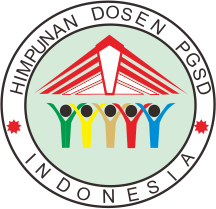The Efect of Problem Posing Learning Assisted Origami Paper on Creative Thinking Skill Students
DOI:
https://doi.org/10.30595/dinamika.v14i1.11669Keywords:
problem posing, origami paper, creative thinkingAbstract
Abstract. The research aimed to see the effect problem posing to creative thinking skills and students achievement-assisted origami paper. Problem posing used to increase students skill not only to find knowledge accidentally but trough the effort to find relationship knowledge their learn. The result from relationship knowledge was question or answer from their filed self so they understand the way to solve the problem using origami paper to attract student’s attention and strengthen student understanding. Literacy study was used in this research. The data obtained were compiled, analyzed, and concluded to get conclusions about the effect of origami paper in the problem posing learning to creative thinking skill students. Based on the results of this research using literacy studies from several research journals and articles show that problem posing has effect of origami paper on creative thinking skills students and students achievement.References
[1] Amri, Sofan. 2013. Pengembangan & Model Pembelajaran Dalam Kurikulum 2013. Jakarta: PT. Prestasi Pustakarya.
[2] Anisah, Nur. 2000. Mahir Membuat Origami Bentuk Binatang. Jakarta : Demodia.
[3] Asriningsih. Mufida. Tafsillatul. 2014. Pembelajaran Problem Posing Untuk Meningkatkan Kemampuan Berpikir Kreatif Siswa. Gamatika. Vol. 1.
[4] Christidamayani.Puri. Agatha, & Kristanto. Dwi. Yosep. 2020. The Effects of Problem Posing Learning Model on Students Learning Achievement and Motivation. IJOLAE. http://journals.ums.ac.id/index.php/ijolae.
[5] Diyanah. Mahirah, dkk. 2018. Meningkatkan Kemampuan Siswa Pada Aspek Bepikir Kreatif Matematika Melalui Pembelajaran Problem Posing. Jurnal Elektronik Pembelajaran Matematika. Vol. 5, Hal. 163-172. http://jurnal.uns.ac.id/jpm.
[6] Fajri. Muhammad. 2017. Kemampuan Berpikir Matematis Dalam Konteks Pembelajaran Abad 21 Di Sekolah Dasar. Lemma. Vol. III, No. 2.
[7] Hanifah. Wardatul, dkk. 2019. Creative Thinking Skills in Science Lessons in Elemanty Schools. Advences in Social Science, Education and Humanities Reserarch. Vol. 397. http://creativecommons.org/licences/by-nc/4.0/
[8] Haryanti. Dwi. Yuyun, Saputra. S D. 2019. Intrumen Penilaian Berpikir Kreatif Pada Pendidikan Abad 21. Jurnal Cakrawala Pendas. Vol. 5, No. 2.
[9] Haryanti. Rica, dkk. 2014. Peningkatan Aktivitas Pembelajaran Matematika Dengan Menggunakan Media Kertas Origami. Jurnal Pendidikan dan Pembelajaran Khatulistiwa. Vol. 3, No. 6.
[10] Khoiriyati. Salis, & Maharintan. B. 2019. Upaya Meningkatkan Kreatifitas Anak Menggunakan Media Kertas Origami. Jurnal Betii.
[11] Kogce. Davut. 2020. Use of origami in mathematics: An Exemplary Activity. Asian Journal of Education and Training. Vol. 6, No. 2.
[12] Larasati. Retno. Dewi, dkk. 2019. Penerapan Model Problem Posing Untuk Meningkatkan Kemampuan Berpikir Kreatif Dalam Pembelajaran Matematika Sekolah Dasar. Jurnal Inovasi Pendidikan Matematika. Vol. 7, No. 7.
[13] Lyn. 2020. Teaching and learning through mathematical problem posing:commentary. International Journal of Educational Research. Vol. 102
[14] Manurung, S.A. dkk. 2020. Pengaruh Kemampuan Berpikir Kreatif Untuk Meningkatkan Hasil Belajar Matematika di Sekolah Dasar. Jurnl Basicedu. Vol. 4, No. 4. http://jbasic.org/index.php/basicedu.
[15] Mardhiyah. Hanifah. Rifa, dkk. 2021. Pentingnya Keterampilan Belajar di Abad 21 Sebagai Tuntutan Dalam Pengembangan Sumber Daya Manusia. Jurnal Pendidikan. Vol. 12, No. 1.
[16] Melfianora. Tanpa tahun. Penulisan Karya Ilmiah dengan studi Literatur. https://OSF.io. Diunduh tanggal 18 Mei 2021.
[17] Nurrita, Teni. 2018. Pengembangan Media Pembelajaran Untuk Meningkatkan Hasil Belajar Siswa. Misykat. Vol. 3, No. 1.
[18] Rahma, F I. 2019. MEDIA PEMBELAJARAN (kajian terhadap Langkah-langkah Pemilihan Media dan Implementasinya dalam Pembelajaran bagi Anak Sekolah Dasar. PANCAWAHANA: Jurnal Studi Islam Vol.14, No.2.
[19] Peraturan Menteri Pendidikan dan Kebudayaan Nomor 69 Tahun 2013 tentang Kurikulum 2013
[20] Purnamawati, dkk. 2017. Appication of Problem Posing Learning Model on Electrical Enginering Subject in SMK 2 Makasar. E Perintis.
[21] Putra, A.T.N, dkk. 2014. Pengaruh Pendekatan Pendidikan Matematika Realistik Berbantuan Origami Terhadap Hasil Belajar Siswa Matematika Siswa Kelas V SDDI Desa Leas Kecamatan Tejakula tahun Pelajaran 2013/2014. Jurnal Mimbar PGSD Universitan Pendidikan Ganesha. Vol. 2, No. 1.
[22] Sardi. 2019. Meningkatkan Kemampuan Berpikir Kreatif Matematika Siswa Pada Pokok Bahasan Bilangan Melalui Pendekatan Problem Posing. Jurnal THEOREMS. Vol. 4, No. 1, pp 29-41.
[23] Setiawan. Fajar. 2017. Upaya Meningkatkan Hasil Belajar Siswa Dengan Menggunakan Media Kertas Origami. Jurnal Bidang Pendidikan Dasar (JBPD). Vol. 2. http://ejournal.Unukama.ac.id/index.php/JPBD.
[24] Siswono, Tatag Y.E. 2005. Upaya Meningkatkan Kemampuan Berpikir Kreatif Siswa melalui Pengajuan Masalah. Jurnal Pendidikan Matematika dan Sains, (1), 1-9.
[25] Sudjana, Nana. 2013. Dasar-Dasar Proses Belajar Mengajar. Bandung: Sinar Baru Algesindo.
[26] Sugiyono. 2017. Metode Penelitian. Bandung: Alfabeta.
[27] Undang-Undang Nomor 20 Tahun 2003 tentang Sistem Pendidikan Nasional.
Published
How to Cite
Issue
Section
License
Authors who publish with this journal agree to the following terms:
Authors retain copyright and grant the journal right of first publication with the work simultaneously licensed under a Creative Commons Attribution License that allows others to share the work with an acknowledgement of the work's authorship and initial publication in this journal.
Authors are able to enter into separate, additional contractual arrangements for the non-exclusive distribution of the journal's published version of the work (e.g., post it to an institutional repository or publish it in a book), with an acknowledgement of its initial publication in this journal.
Authors are permitted and encouraged to post their work online (e.g., in institutional repositories or on their website) prior to and during the submission process, as it can lead to productive exchanges, as well as earlier and greater citation of published work (See The Effect of Open Access).

Dinamika Jurnal Ilmiah Pendidikan Dasar is licensed under a Creative Commons Attribution 4.0 International License.














